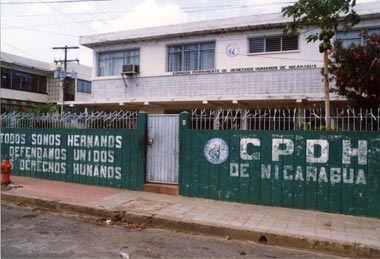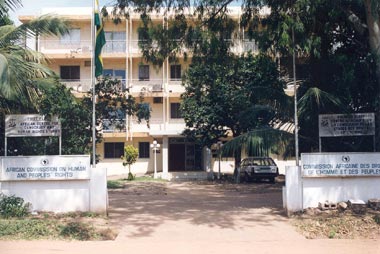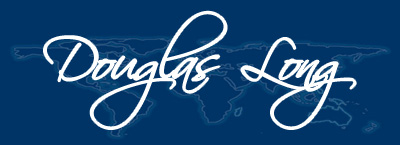Human Rights
HUMAN RIGHTS IN OUR WORLD
I wrote Human Rights in Our World (HRIOW) as an introductory college-level textbook. This was a work of personal interest, in which most of two years of my life (1997/8) was spent reading all of the major works, traveling the world and interviewing people. This project is the culmination of my 20+ years working (volunteer) with Amnesty International and other NGOs, as well as travel around the world for research. My trips took me to Mary Robinson’s office in the UN Human Rights Center (Geneva), the African Commission on Human and People’s Rights in The Gambia, and many other places.
Human Rights In Our World takes a fundamentally different approach from the current literature. Instead of looking at human rights abuses which have occurred and asking, why did this happen, this text develops the theme: How are human rights violations prevented and what are the conditions in which human rights are respected?
It was under contract with Sage Publications, the top-ranked academic publisher. My plan was to have a book heavy on facts and issues, but their reviewers wanted something softer and personal. Many human rights workers, like me, dislike this approach because we are seeking universal respect for human rights, not the Hollywood-style search for victims and villains.
Soon after the book was written and gained a publishing contract, I began a doctoral program which put the project on hold. It has now been many years, and given this time for reflection, my ideas on human rights have changed to the point where this book needs more that a revision. It would need a total rewrite.
In particular, I no longer believe in “rights”. This concept is based on legal doctrine. A right either exists or it does not. This is quite black or white. There are no partial rights, no gray area. Clearly, this is not an accurate reflection of reality. Instead of “human rights”, I have come to believe we should be referring to “human dignity”, which more accurately reflects what we are trying to achieve. The problem, which became apparent during my research, is it that the human rights movement is dominated by lawyers that seek to keep the movement as a professional franchise. I was even told by a prominent lawyer that I am unqualified to write a book on the subject because only lawyers are experts!
CONTENTS
PREFACE
- INTRODUCTION TO HUMAN RIGHTS
What is a human right?
Abortion
What are the Rights?
The Universal Declaration of Human Rights (Abbreviated)
Challenges to Human Rights
Cultural Relativism
Asian and American Values Compared
The Limits of Rights
Nanuvut
The Future of Rights
A New World of Human Rights
Conclusion
PROFILES IN HUMAN RIGHTS: Thomas Paine - HUMAN RIGHTS VIOLATIONS
How are Human Rights Violated?
Arbitrary Arrest and Execution
Focus on the Humanities: Andre Brink’s “A Dry White Season”
Crime
Crime Statistics
The Death Penalty
Death Sentence: 1881
Economic Rights
Freedom of Expression
Genocide
Planetary and Generational Rights
Self-Determination
Who deserves recognition?
Slavery
Torture
Amnesty International’s 12-Point Program for the Prevention of Torture
Forms of torture
Survivors International
Conclusion
PROFILES IN HUMAN RIGHTS: Iqbal Masih - PEOPLE AT RISK
Indigenous Peoples
Prisoners
Refugees
Human Rights Parks
Minority Groups
Sexual Minorities
Children
Causes of Death for Children Under 5 Years Old
Conclusion
PROFILES IN HUMAN RIGHTS: Raul Wallenburg - WOMEN’S RIGHTS
An Overview of Women’s Rights
Civil and Political Rights of Women
Focus on the Humanities: Harriet Beecher Stowe
Violence Against Women
Sex, Sexuality and Rights
Female Genital Mutilation
Women in the Business World
Guerrilla Girls
The 100 Most Influential Women of All Time
Conclusion
PROFILES IN HUMAN RIGHTS: Radhika Coomaraswamy - HISTORY OF HUMAN RIGHTS
The Lessons of History
Ancient Beginnings
The Nobel Peace Prize
The Birth of the Idea of Human Rights
Focus on the Humanities: Les Miserables
World War I and the League of Nations
World War II and the United Nations
The UN System
Human Rights Become Universal
Timeline of Human Rights
Conclusion
PROFILES IN HUMAN RIGHTS: Frederick Douglass - ORIGIN OF RIGHTS: PEOPLE AND SOCIETY
Human rights in Our Daily Lives
Mall Santa Won’t Promise Gun
The Behavioral Sciences
Violence and Aggression
Violence in the Media
The Dr. Martin Luther King Center’s Six Principles of Non-Violence
Police and Solider Psychology
The Offenders
The Mindset of a Killer
The Psychology of Torture
Culture
Caste Systems
Social Darwinism
Prisoner’s Dilemma
Social Control: Conformity and Obedience
Stanley Milgram’s Study on Obedience
Ethnic Conflict
UNESCO, Statement on Race and Racial Prejudice
Education and Human Rights
Language and Attitudes
Public Health and Human Rights
Conclusion
PROFILES IN HUMAN RIGHTS: Mahatma Gandhi - RELIGION AND HUMAN RIGHTS
An Overview of Religion and Human Rights
Religion as a Right
Religious Activism for Human Rights
Christianity
Judaisim
Islam
Hinduism
Confuscianism
Conclusion
The Major Religions
PROFILES IN HUMAN RIGHTS: Mother Teresa - POLITICAL APPROACHES TO HUMAN RIGHTS
The Nature of Politics
Major International Organizations
The Americas
Europe
Middle East
Africa
The African Charter’s Duties Clause
Asia
British Commonwealth
National political systems
Focus on the Humanities: George Orwell’s World
Foreign policy
Sub-State Governments
Humanitarian Relief
Non-Governmental Organizations
Amnesty International
Conclusion
PROFILES IN HUMAN RIGHTS: Ang Sang Suu Kyi - HUMAN RIGHTS LAW
An Introduction to law
Prosecuting the Old Regime
International Law
The World War II Tribunals
The Sharia
The Geneva Conventions
The Geneva Conventions and Protocols
Regional systems
European Court of Human Rights
Inter-American Court of Human Rights
African Court on Human and People’s Rights
Caribbean Court of Justice
National laws
The King of Death Row
Local Laws
Street Law
Law Enforcement
Police Training
The Los Angeles Police Department’s Code of Ethics
Conclusion
PROFILES IN HUMAN RIGHTS: Rigoberta Menchu Tum - THE UNITED NATIONS SYSTEM
Overview of the United Nations System
UN Commission on Human Rights
The UN High Commissioner for Human Rights
ICCPR’s Human Rights Committee
Other UN Organs
Reporting Systems
Treat-Based Reporting Systems
Assessing the UN’s Role
Legal Provisions of the UN
Some of the Main Treaties and Instruments
PROFILES IN HUMAN RIGHTS: Eleanor Roosevelt - WAR AND PEACE: HUMAN RIGHTS DURING ARMED CONFLICT
The Nature of Armed Conflict
Landmines
Human Rights Issues During Conflict
The Offenders
Controls on the Conduct of War
The Red Cross
Seven Fundamental Principles of the International Committee of the Red Cross
Peacekeeping
Just War Doctrine
Demilitarization
Conclusion
PROFILES IN HUMAN RIGHTS: Ken Sara-Wiwa - BUSINESS AND HUMAN RIGHTS
The Business Environment
Bhopal
Economic Systems
What is Expected of Businesses?
Preference and Prejudice
Human Rights and Poverty
The Rights/Development Tradeoff
The Global Economy
The Internet and Human Rights
Labor Issues
Hourly Earnings in Manufacturing in Selected Countries
The Arms Industry
The World’s Top Defense Companies
Technology
New Ways to Clear Minefields
Doing Business with Human Rights Abusers
Culture Jamming
PROFILES IN HUMAN RIGHTS: Desmond Tutu - GRASS ROOTS ACTIVISM
What is Grass Roots Activism?
Career in Social Activism
Finding your mission
Getting Organized
Lobbying
Hazardous Work
Organizing Public Events
Boycotts
Fundraising
PROFILES IN HUMAN RIGHTS: Dr. Anan Ashrawi
APPENDIX- SELECTED HUMAN RIGHTS DOCUMENTS
The Universal Declaration of Human Rights
International Covenant on Civil and Political Rights
International Covenant on Economic, Social and Cultural Rights
Nobel Peace Price Recipients
SELECTED BIBLIOGRAPHY
INDEX
Art and the humanities are a major interest in human rights, and this book will be the first to include a significant amount of illustrations and discussion on this area. I have confirmed approval for the following:
- Cameron Macintosh, Producer of the play Les Miserables in London, for use of their world famous logo to illustrate the inset on Victor Hugo’s story of human dignity and freedom.
- Claudia Munoz, staff artist for The Economist, for a cartoon used in an article on the International Criminal Court.
- National Geographic Society, use of a passage on Nunavut, the newest Indian Nation in Canada
- Dr. Martin Luther King’s Principles of Nonviolence.

The Nicaraguan Human Rights
Commission, Managua. 1997

The African Commission on People and Human Rights, The Banjul, The Gambia. This is next to the US Embassy, so my nation’s overzealous and undertrained security guards yelled at me for taking this picture, which of course I ignored.
